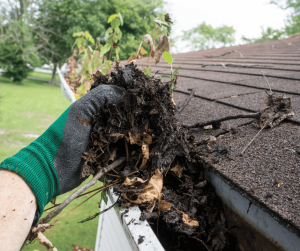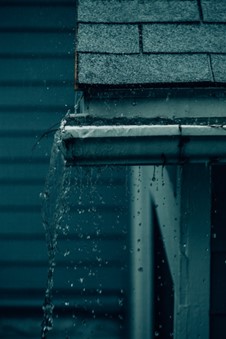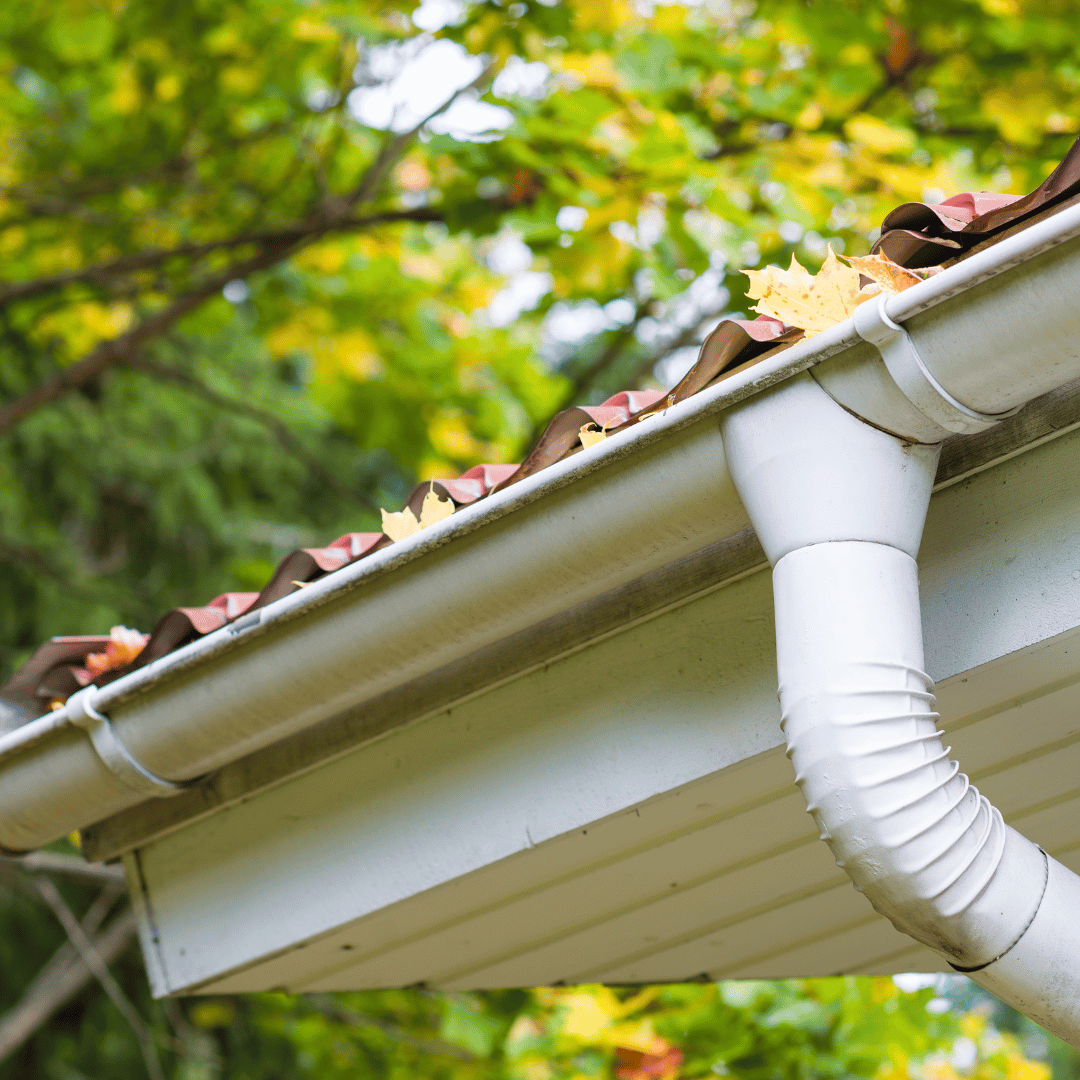
Leaves Blocking Gutters
Maintaining your home’s gutters is a crucial aspect of overall home maintenance. Among the many challenges homeowners face, leaves blocking gutters can lead to significant issues if left unchecked. At HomeSmiles, we understand the importance of proactive care to prevent costly repairs down the line. In this article, we’ll explore why leaves block gutters, the consequences of neglecting gutter maintenance, and effective solutions to keep your gutters flowing smoothly.
Gutters serve a vital role in directing rainwater away from your home’s foundation, preventing water damage, mold growth, and structural issues. However, when leaves and debris accumulate in gutters, they obstruct the flow of water, causing backups that can lead to overflowing gutters and potential water damage to your roof, siding, and landscaping.
By understanding the causes and consequences of leaves blocking gutters, you can take proactive steps to protect your home and extend the lifespan of your gutter system. Let’s delve into how you can maintain clear, efficient gutters to safeguard your home’s integrity.
Why Leaves Block Gutters
Gutters are designed to collect rainwater and direct it away from your home. However, they can quickly become clogged when leaves and debris accumulate. Here’s why leaves block gutters and the impact it can have:
- Accumulation Process: During fall, leaves often fall onto roofs and are carried by rainwater into gutters. Over time, they accumulate along with twigs, pine needles, and other debris, forming blockages.
- Obstruction of Water Flow: When gutters are blocked by leaves, water cannot flow freely. Instead, it pools inside the gutters, leading to overflow during rainfall.
- Weight and Strain: The weight of wet leaves and debris can strain gutter fasteners and brackets, potentially causing them to pull away from the roofline.
- Ice Dam Formation: In colder climates, blocked gutters can lead to ice dams in winter. Ice dams prevent melting snow from draining properly, causing water to seep under shingles and into the home.
The accumulation of leaves in gutters not only affects their functionality but also increases the risk of water damage to your home’s roof, siding, and foundation. Regular gutter cleaning and maintenance are essential to prevent these issues and ensure your gutters can effectively protect your home during every season.
Consequences of Clogged Gutters
When leaves clog gutters, the consequences can be far-reaching and potentially costly. Here are some of the main issues that arise from neglecting gutter maintenance:
- Water Damage: One of the primary risks of clogged gutters is water damage to your home. Overflowing gutters can lead to water seeping into the roof, walls, and foundation, causing rot, mold growth, and structural deterioration over time.
- Foundation Issues: Excess water from clogged gutters can pool around the foundation of your home. This can lead to cracks in the foundation, basement flooding, and even foundation settlement or shifting.
- Roof Damage: Blocked gutters can cause water to back up under shingles, leading to roof leaks and potentially costly repairs. Over time, this can compromise the integrity of your roof and decrease its lifespan.
- Landscaping Damage: Water overflow from clogged gutters can erode landscaping and flower beds, wash away mulch, and damage plants and shrubs near the foundation of your home.
- Pest Infestations: Stagnant water in clogged gutters can become a breeding ground for mosquitoes and other pests. Additionally, debris in gutters can provide nesting areas for birds and rodents.
- Ice Dams: In colder climates, clogged gutters can contribute to the formation of ice dams on the roof. Ice dams prevent proper drainage and can lead to water seeping into the attic and causing interior damage.
Addressing gutter blockages promptly through regular cleaning and possibly installing gutter guards can mitigate these risks, preserving your home’s structural integrity and reducing the likelihood of costly repairs.
How to Prevent Leaves from Blocking Gutters
Preventing leaves from blocking gutters is key to maintaining their functionality and protecting your home. Here are effective methods to keep your gutters clear:
- Regular Gutter Cleaning: Schedule regular gutter cleaning sessions, especially during fall when leaves are most likely to accumulate. Remove leaves, twigs, and debris from gutters and downspouts to ensure water can flow freely.
- Use of Gutter Guards: Consider installing gutter guards or leaf screens to prevent leaves from entering gutters while allowing water to pass through. Gutter guards come in various types, including mesh screens, foam inserts, and solid covers, each offering different levels of effectiveness and maintenance requirements.
- Trim Overhanging Branches: Trim back tree branches that hang over your roof to reduce the amount of leaves and debris that fall into gutters during storms and windy weather.
- Regular Roof Maintenance: Keep your roof clear of debris, such as leaves, pine needles, and branches, to minimize the amount of material that can wash into gutters during rainfall.
- Check and Adjust Downspouts: Ensure downspouts are properly positioned and extend at least a few feet away from your home’s foundation to direct water away effectively.
By implementing these preventive measures, you can reduce the likelihood of leaves blocking gutters and the associated risks of water damage and structural issues. Regular maintenance not only preserves the lifespan of your gutters but also protects your home’s exterior and interior from potential water-related damage.
Do Leaf Guard Gutters Really Work?
Leaf guard gutters are designed to prevent leaves and debris from entering gutters while allowing water to flow through. Here’s an overview of how leaf guard gutters work and their effectiveness:
- Functionality: Leaf guard systems typically feature covers, screens, or inserts that fit over or inside gutters. They are designed to block leaves and larger debris while allowing rainwater to flow into the gutters and downspouts.
- Effectiveness: Leaf guard gutters can be effective in reducing the frequency of gutter cleaning by minimizing the amount of debris that enters gutters. They help maintain gutter flow and prevent blockages that can lead to overflow and water damage.
- Types of Leaf Guards: There are different types of leaf guard systems available, including:
- Mesh Screens: Fine mesh screens that cover the gutter to block debris.
- Solid Covers: Covers that allow water to flow over the edge while blocking leaves.
- Foam Inserts: Inserts that fit inside gutters to block debris.
- Considerations: While leaf guard gutters can be effective, their performance may vary based on factors such as the type of debris in your area, gutter size, and installation quality. Regular maintenance and occasional checks are still recommended to ensure they are working effectively.
Understanding the pros and cons of leaf guard gutters can help you make an informed decision about whether they are suitable for your home. In the next section, we’ll discuss the current status of leaf guard systems and considerations for installation.
Current Status of Leaf Guard
Leaf guard systems have been a popular choice for homeowners seeking to reduce gutter maintenance and prevent debris buildup. Here’s an overview of the current status of leaf guard systems:
- Market Presence: Leaf guard gutters, including brands like LeafGuard® and others, continue to be available in the market. These systems are often marketed as solutions to minimize gutter cleaning and maintenance.
- Availability: Leaf guard products are still offered by various companies specializing in gutter protection systems. They are available in different styles and materials to suit various gutter types and homeowner preferences.
- Effectiveness: Many homeowners report satisfaction with leaf guard gutters, citing reduced gutter cleaning frequency and improved gutter performance during rainstorms. However, effectiveness can vary based on installation quality and local environmental factors.
- Alternative Options: Besides traditional leaf guard systems, homeowners may also consider alternatives such as gutter screens, foam inserts, and DIY solutions to achieve similar results at different price points.
- Considerations: Before investing in leaf guard gutters, it’s advisable to research local suppliers, review customer feedback, and obtain quotes for installation. Additionally, consider the long-term maintenance requirements and potential warranty coverage.
As with any home improvement investment, evaluating the current status and effectiveness of leaf guard gutters can help you make an informed decision that best suits your home’s needs and budget.
Disadvantages of Leaf Guard Gutters
While leaf guard gutters offer benefits in reducing gutter maintenance, there are some potential drawbacks to consider:
- Initial Cost: Leaf guard systems can be more expensive than traditional gutters and may require professional installation, adding to the upfront cost of gutter protection.
- Effectiveness Variability: The effectiveness of leaf guard gutters can vary depending on factors such as the type of debris in your area, gutter size, and the quality of installation. Some designs may still allow small debris or fine particles through, requiring occasional maintenance.
- Maintenance Requirements: While leaf guard gutters reduce the frequency of gutter cleaning, they may still require periodic maintenance. Over time, debris can accumulate on top of or within the guard system, necessitating cleaning or adjustment.
- Compatibility Issues: Leaf guard systems may not be compatible with all gutter types or roof configurations. It’s essential to ensure compatibility and proper installation to maximize their effectiveness.
- Aesthetic Considerations: Some homeowners may find that certain leaf guard designs alter the appearance of their home’s exterior, particularly if the guards are visible from the ground.
- Long-Term Durability: Depending on the material and design, leaf guard systems may have varying durability and longevity. Understanding warranty coverage and potential repair or replacement costs is important for long-term planning.
Considering these disadvantages alongside the benefits can help you make an informed decision about whether leaf guard gutters are the right choice for your home’s gutter protection needs.
Cost Considerations
Understanding the cost associated with leaf guard gutters is essential when evaluating whether they are a suitable investment for your home. Here’s what you need to know about the cost of leaf guard gutters:
- Installation Costs: The cost of installing leaf guard gutters can vary widely depending on factors such as the size of your home, the type of leaf guard system chosen, and local labor rates. On average, homeowners can expect to pay between $15 to $30 per linear foot for professional installation.
- Material Costs: Leaf guard systems are available in various materials, each with its own price point. Common materials include aluminum, vinyl, and stainless steel. The material chosen can impact both the upfront cost and long-term durability of the gutter protection system.
- Additional Expenses: In addition to the cost of the leaf guard system itself, consider any additional expenses such as gutter cleaning before installation, removal of existing gutters if necessary, and potential repairs or adjustments.
- Maintenance Savings: While leaf guard gutters involve an upfront investment, they can potentially save money in the long run by reducing the frequency of gutter cleaning services or DIY efforts. Calculate potential savings based on your current gutter maintenance expenses and the projected lifespan of the leaf guard system.
- Comparative Costs: Compare the cost of leaf guard gutters with alternative gutter protection options, such as gutter screens or foam inserts, to determine the most cost-effective solution for your home.
- Warranty Coverage: Review the warranty offered by the leaf guard manufacturer or installer. Understand what is covered, including defects in materials or workmanship, and any conditions that may affect warranty eligibility.
By assessing the total cost of leaf guard gutters, including installation, materials, and potential long-term savings, you can make an informed decision that aligns with your budget and home maintenance goals.
Maintaining clear gutters is crucial for protecting your home from water damage and preserving its structural integrity. Leaves blocking gutters can lead to a host of issues, including roof damage, foundation problems, and landscape erosion. By understanding the causes and consequences of clogged gutters, you can take proactive steps to prevent these issues and ensure your home remains safe and dry.
Regular gutter cleaning, along with the use of gutter guards if appropriate for your home, can significantly reduce the risk of leaves and debris obstructing your gutters. Consider the benefits of investing in gutter protection systems like leaf guard gutters, weighing their effectiveness, cost, and maintenance requirements against your home’s specific needs.
At HomeSmiles, we specialize in preventative home maintenance to address all your “honey-do” tasks and ensure your home is well-protected year-round. Whether it’s gutter cleaning, pressure washing, or dryer vent cleaning, our comprehensive services help you avoid costly repairs down the line.
Protect your investment and maintain your home’s curb appeal with regular gutter maintenance and effective gutter protection solutions. Contact HomeSmiles today to schedule your next home maintenance service and experience the peace of mind that comes with a well-maintained home.
- Protecting Your Property: Why the Right Cleaning Method Makes All the Difference
- The #1 Thing That’s Dulling Your Curb Appeal (And How to Fix It)
- How Maintenance Bundles Provide Peace of Mind for Busy Small Business Owners and Facility Managers
- Essential vs. Complete Home Packages: Choosing the Right Preventive Care for Your Property
- How a Simplified Service Model Benefits Both Homeowners and Franchisees Alike


